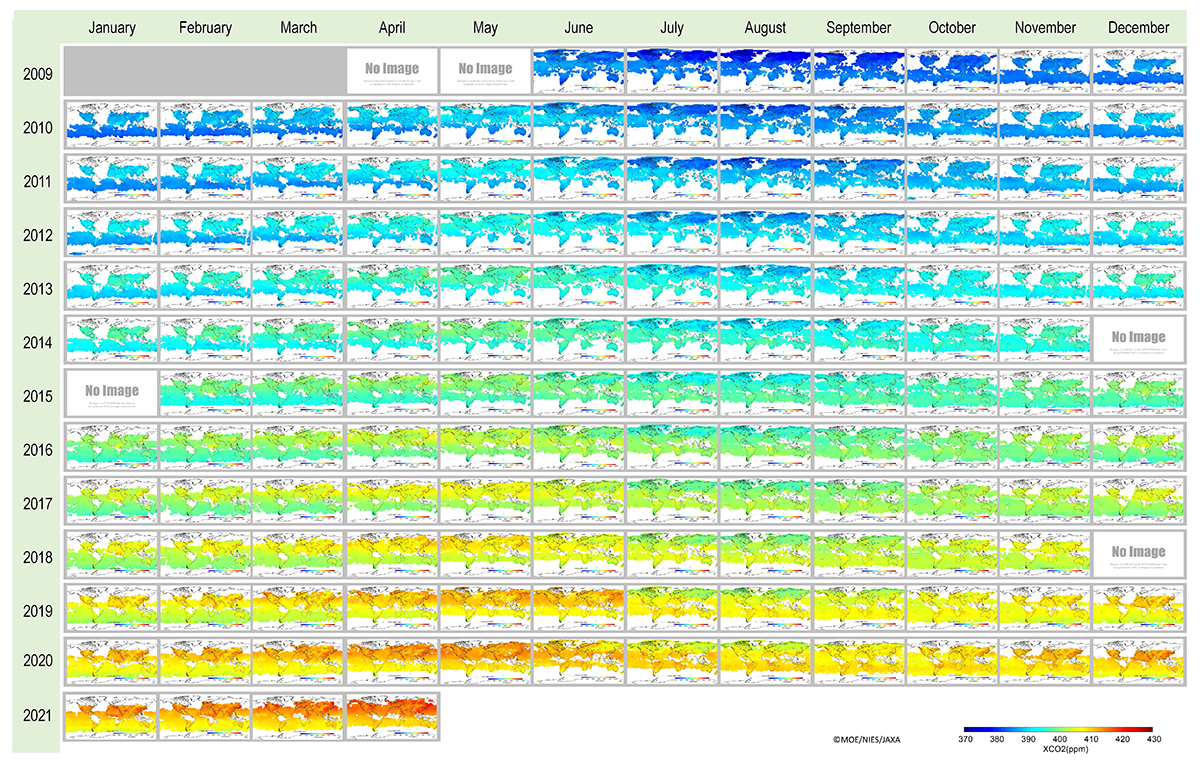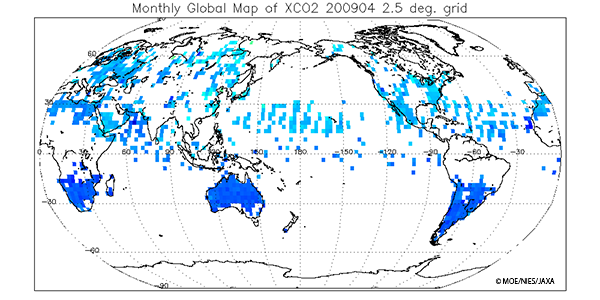Observation of CO2 concentration by GOSAT2022.11.04

The Greenhouse gases Observing SATellite: "GOSAT" was launched in 2009, and it is a joint project developed by three institutions, the Ministry of the Environment, the National Institute for Environmental Studies (NIES), and the Japan Aerospace Exploration Agency (JAXA).
The list is observations of CO2 concentration distribution over more than 12 years by GOSAT.
The data shows regional differences in CO2 concentration distribution, seasonal variations, and annual changes.
As for regional differences, we can see that the concentration fluctuates more widely over land areas in the Northern Hemisphere than over the land areas in the Southern Hemisphere or the oceans.
Seasonal variations indicate that in summer, plants are active in photosynthesis, which absorbs carbon dioxide and reduces atmospheric concentrations. Conversely, in winter, plant respiration and decomposition of soil organic matter are more dominant than photosynthesis, and atmospheric concentrations increase.
The change from year to year is evident, from colder to warmer colors.
GOSAT launched and started observation from 2009 on, the global concentration of carbon dioxide has increased by about 2 to 3 ppm annually. As of 2021, it continues to rise at a rate of about 420 ppm.
It is about 50% higher than the pre-industrial revolution (around 1750) CO2 concentration of 280ppm.
This section introduces the average temperature in Japan as observed by the Japan Meteorological Agency (JMA).
In Japan, a day with a maximum temperature of 35°C or higher is called an "extremely hot" day.
Comparing the annual average number of extremely hot days observed in each of the 30 years between 1910-1939 and 1991-2020, the average number of extremely hot days increased from about 0.8 days to about 2.5 days, an increase of about 3.1 times per year.
In the past few years, 2018 (Kumagaya, Saitama Prefecture) and 2020 (Hamamatsu, Shizuoka Prefecture) reached 41.1°C, the highest temperature recorded in Japan.
In 2020, the standard deviation of Japan's average temperature from the base value was +0.65°C, the highest value since statistics began in 1898.
Over the long term, Japan's average temperature is increasing at a rate of 1.26°C per 100 years.
To minimize the effects of climate change, the Paris Agreement at COP21 held in 2015 set a target for efforts to limit the temperature increase from pre-industrial times to within 1.5°C. However, the Intergovernmental Panel on Climate Change (IPCC) in August 2021 reported projections reaching 2021-2040.
In November 2022, the 27th Conference of the Parties of the UNFCCC (COP27) in Sharm El-Sheikh, Egypt, will discuss Climate change adaptation and efforts of the carbon neutrality of the world, etc.
The irrefutable fact is that global warming is progressing due to the emission of greenhouse gases such as CO2.
Satellite "visualization" of the atmosphere helps us to get more of an understanding of climate change.
| Satellite | The Greenhouse gases Observing SATellite: "GOSAT" |
|---|---|
| Observation period | June 2009 - April 2021 |

